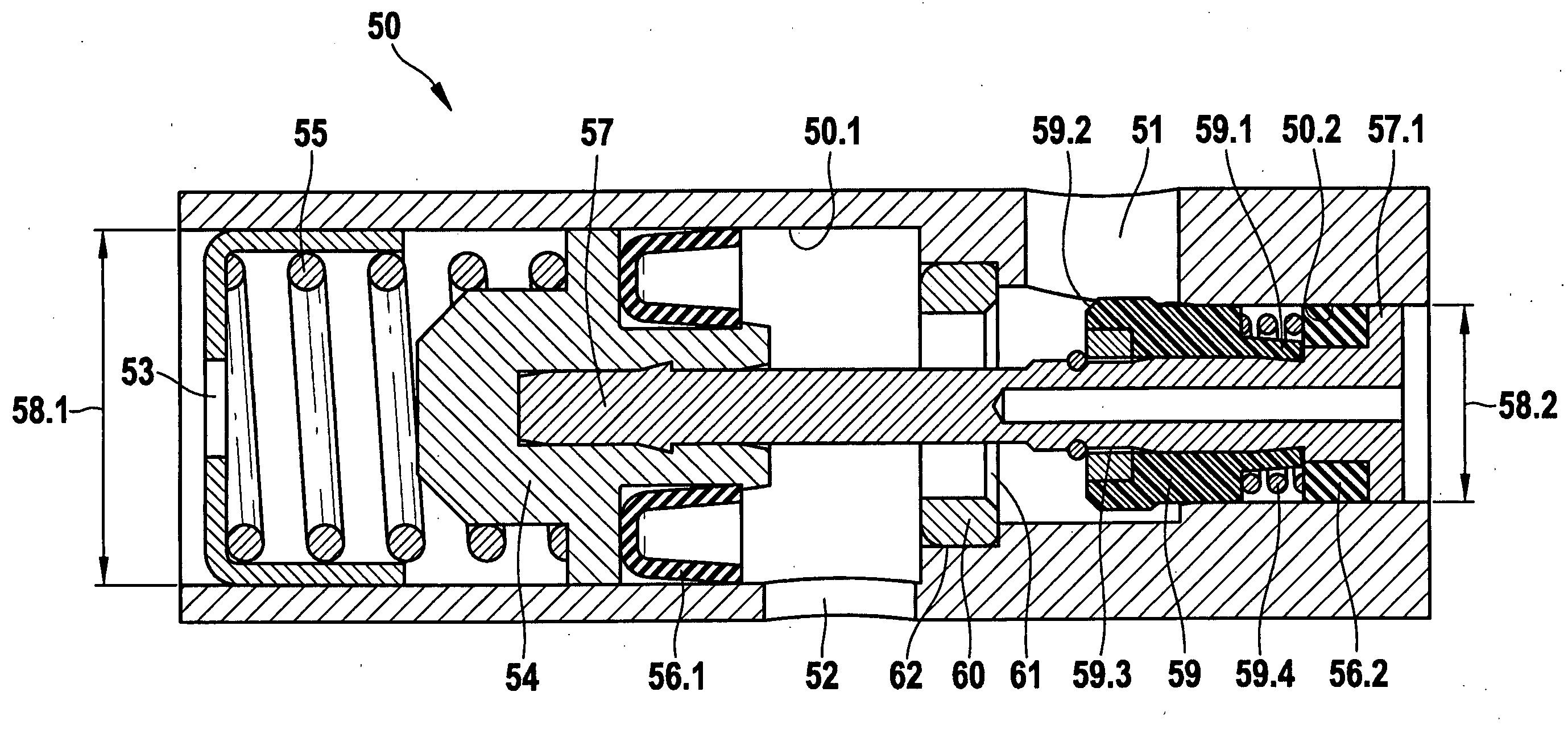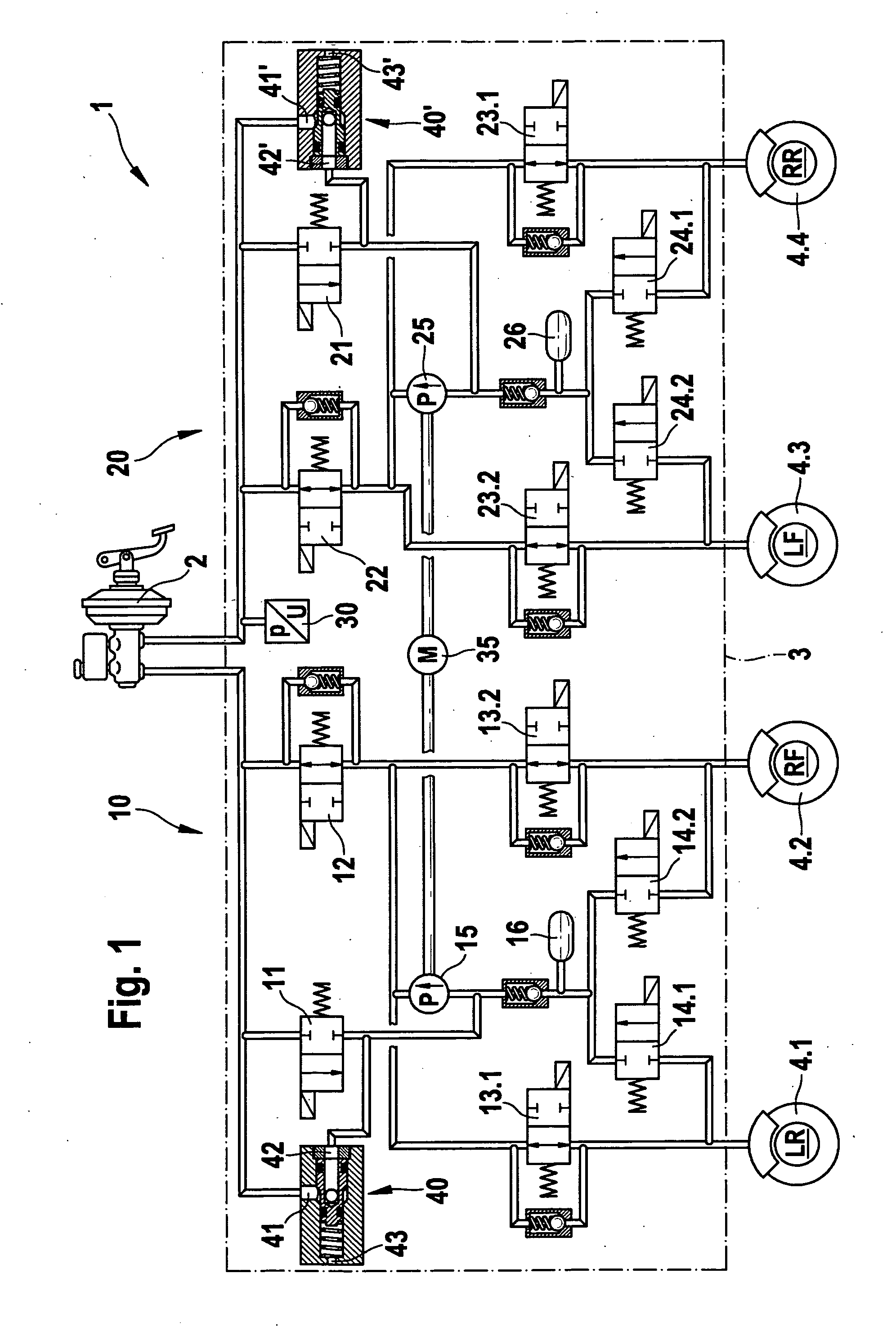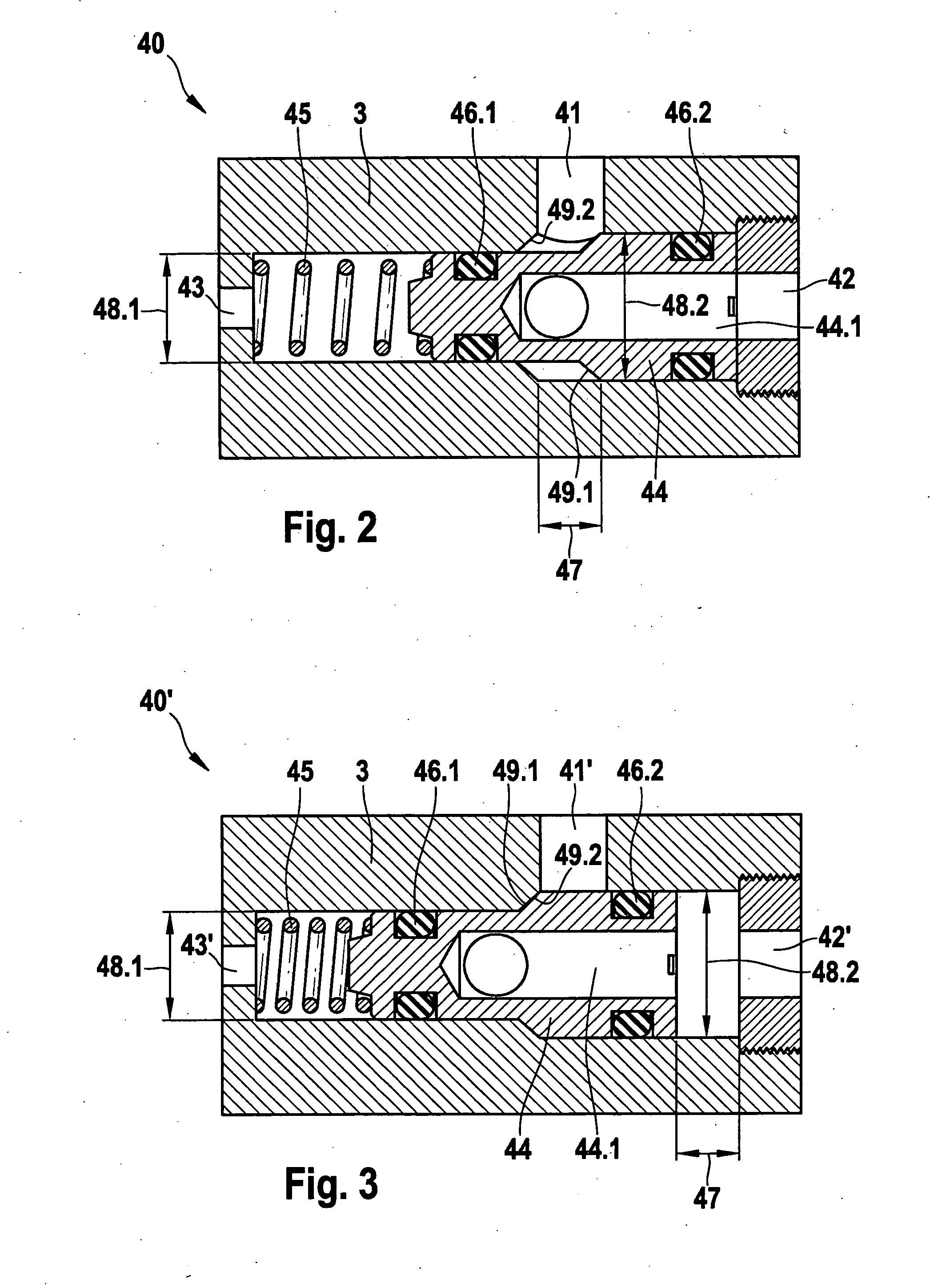Control valve for a vehicle brake system, and vehicle brake sysem having such a control valve
a technology for brake systems and control valves, which is applied in the direction of braking systems, rotary clutches, fluid couplings, etc., can solve the problems of increased friction, increased extrusion, and high wear of control valves, and achieve the effect of reducing the required control pressure and improving the control quality of control valves
- Summary
- Abstract
- Description
- Claims
- Application Information
AI Technical Summary
Benefits of technology
Problems solved by technology
Method used
Image
Examples
Embodiment Construction
[0025]The exemplary embodiment, shown in FIG. 4, of a vehicle brake system 1′ of the invention is constructed essentially identically to the conventional vehicle brake system 1 of FIG. 1, and it includes the same components, which perform the same or analogous functions, with the addition of a first control valve 50 and a second control valve 50′. Thus the exemplary embodiment of the vehicle brake system 1′ of the invention includes a master cylinder 2, a fluid control unit 3′, indicated by dot-dashed lines, and four wheel brakes 4.1 through 4.4, which each have an associated wheel brake cylinder, not shown. Each two of the four wheel brakes 4.1 through 4.4 are assigned to one brake circuit 10′, 20′, and each brake circuit 10′, 20′ communicates with the master cylinder 2. Thus a first wheel brake 4.1, which is disposed for instance on a rear vehicle axle on the left, and a second wheel brake 4.2, which is for instance disposed on a front vehicle axle on the right, are assigned to a ...
PUM
 Login to View More
Login to View More Abstract
Description
Claims
Application Information
 Login to View More
Login to View More - R&D
- Intellectual Property
- Life Sciences
- Materials
- Tech Scout
- Unparalleled Data Quality
- Higher Quality Content
- 60% Fewer Hallucinations
Browse by: Latest US Patents, China's latest patents, Technical Efficacy Thesaurus, Application Domain, Technology Topic, Popular Technical Reports.
© 2025 PatSnap. All rights reserved.Legal|Privacy policy|Modern Slavery Act Transparency Statement|Sitemap|About US| Contact US: help@patsnap.com



